Lavushi Manda National Park: Zambia’s hidden gem
After an off-the-beaten-path African experience? There is remote hiking, epic birdwatching and peaceful landscapes in Lavushi Manda National Park in Zambia without the tourist crowds. A great place to be enjoyed by nature lovers, hikers and photographers who love to be alone in a place that is not touched by human beings.
- Where is Lavushi Manda National Park?
- Why visit Lavushi Manda National Park?
- What to expect: Scenery and wildlife
- Things to do in Lavushi Manda National Park
- Park entry fees and permits
- Connectivity and facilities
- Photography tips for nature lovers
- Nearby attractions to explore
- Where to stay: Accommodation options
- Travel tips for tourists
- How is the park managed?
- Future of Lavushi Manda: What’s next?
- FAQs for travelers
- Final thoughts
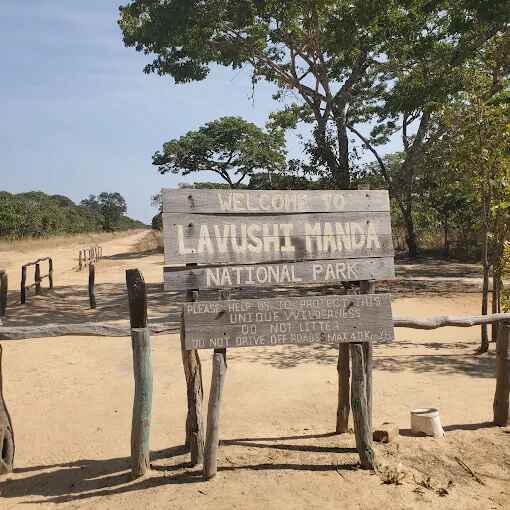
Behold the majestic mountains and lush forests of Lavushi Manda
Where is Lavushi Manda National Park?
The Lavushi Manda National Park is situated in the core of the Muchinga Province in northeastern Zambia, east of Lake Bangweulu and west of the Great North Road. It is far-flung, rugged and well worth the visit.
Getting there: Road trips and directions
The nearest large town is Mpika. It is a 3-hour drive by 4x4 on gravel roads. The ride is rough and that is a part of the adventure. Ensure that your vehicle is roadworthy in case of off-road situations particularly during the wet season.
Best time to visit
Your best chance is the dry season, May to October. You will have more visible paths, more wildlife encounters and access to hiking paths. Roads may be muddy and slippery during the rainy season (November to April).
Why visit Lavushi Manda National Park?
Untouched wilderness
This park is still wild in the purest sense. No paved roads. No safari convoys. Just you, the forest and the occasional warthog crossing your path.
Fewer crowds, More solitude
If you hate busy trails and noisy campsites, you’ll love the peace of Lavushi Manda. Most days, you might not see another tourist at all.
What to expect: Scenery and wildlife
Landscape and ecosystems
Be prepared to find vast miombo woodlands, towering granite hills and clear rivers. The southern side of the park is dominated by the Lavushi Mountains, which provide a beautiful background in any photo.
Animals you might see
Large mammals are scarce due to past poaching. Visitors commonly see bushbuck, warthogs and vervet monkeys. Leopards exist but are extremely rare and usually only detected by camera traps. Wildlife are bashful, and patient explorers are usually rewarded.
Birdwatching paradise
This park is a magnet for birders. With over 300 recorded species, including the Black-cheeked Lovebird and African Broadbill, your binoculars will be working overtime.
Things to do in Lavushi Manda National Park
Go hiking in the Lavushi mountains
Lace up your boots and hit the trails. These hikes are challenging but rewarding, offering panoramic views and a true wilderness experience.
Explore nature trails
The forest and hills have informal footpaths. They can be visited through local guides who tell the stories about the plants, animals and conservation in the park.
Try your hand at fishing
Fishing is allowed only in designated areas and generally on a seasonal, catch-and-release basis. Some streams and rivers hold bream and catfish, but conditions vary and local guidance is essential. It is a carefree mode of getting into contact with nature and local culture.
Park entry fees and permits
Entry costs:
As of 2025, international tourists pay about $5 per person per day to enter Lavushi Manda. Vehicle entry is around $15 for cars under 3 tons. Rates are set by Zambia’s Department of National Parks and Wildlife.
Vehicle fees:
If you’re bringing a car, expect an additional vehicle entry fee - usually under $10, payable at the gate.
Payment method:
Most payments are made in cash at the entrance. It’s recommended to carry Zambian Kwacha, as card machines may not be available or functional.
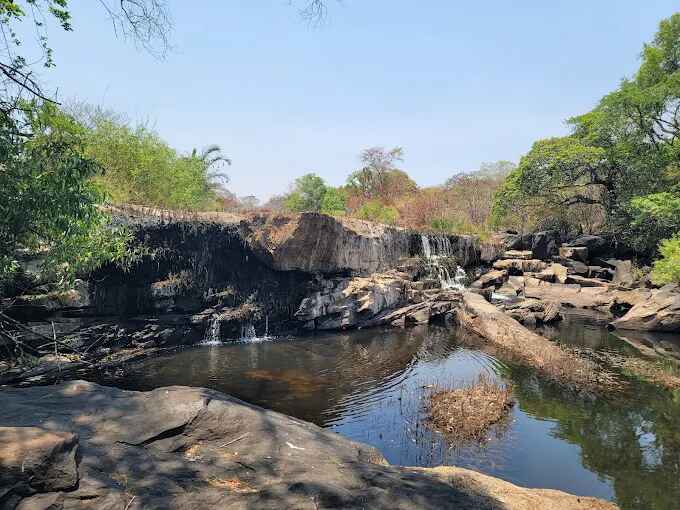
As the sun rises, Lavushi Manda unveils its breathtaking natural beauty
Connectivity and facilities
Mobile signal:
Mobile network coverage inside the park is limited to none. Some areas near the park edge may have weak signals, but don’t count on it.
Travel tip:
Download offline maps, GPS apps and any travel documents before entering the park. Let someone know your travel plan, especially if going alone.
Facilities:
There are no modern facilities, no electricity and no guaranteed toilets inside the park. Visitors must bring their own water, food, cooking gear and power sources.
Water and cooking:
There’s no running water. Bring your own portable water filter, cooking supplies and enough food and water for your entire stay.
Photography tips for nature lovers
Gear Tips:
- Bring a telephoto lens for birds and wildlife
- Use a wide-angle lens for landscapes
- A light tripod helps on uneven terrain
Best times for photos:
Early mornings and late afternoons provide the best lighting and active animal sightings.
Power tip:
There’s no electricity, so carry extra batteries and power banks.
Nearby attractions to explore
Bangweulu wetlands:
Explore by canoe and search for the elusive Shoebill Stork. Great for birders and water-lovers.
Lake Bangweulu:
Relax by the lakeside, enjoy local fish dishes and witness unforgettable African sunsets.
Kasanka National Park:
Time your trip to witness the world’s largest bat migration (October–December) - millions of fruit bats in the skies!
North Luangwa National Park:
For experienced travelers seeking rugged safari adventures, this park offers remote wildlife encounters.
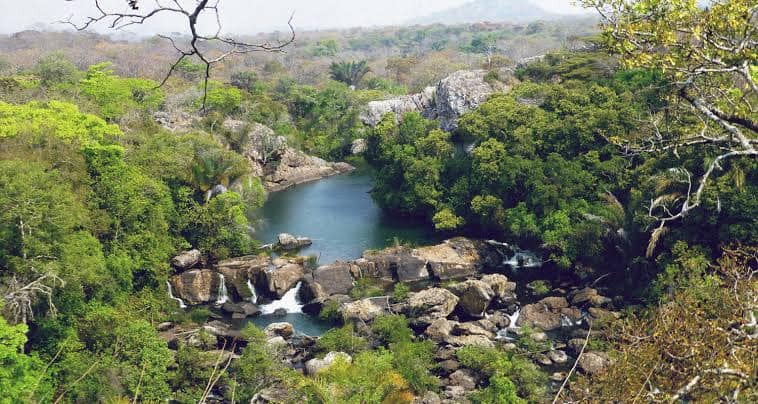
Discover the untouched beauty of Lavushi Manda – where nature remains pristine
Where to stay: Accommodation options
Camping and bush camps
Bring your tent and enjoy the sounds of nature all night long. There are no established campsites with facilities inside the park. Camping may be possible but must be arranged in advance with NPWS or community groups. Expect to be completely self-sufficient (bring water, food, sanitation supplies).
Nearby lodges
Accommodation is limited, but some community-run lodges and bush camps near the park provide rustic charm and warm Zambian hospitality. It’s best to book ahead and confirm availability.
Travel tips for tourists
What to pack
- 4x4 vehicle with spare tires
- Hiking boots and durable clothes
- Sunscreen, bug spray and a wide-brim hat
- Binoculars and a good camera
- Plenty of food, water and fuel
There are no shops inside the park, so come fully stocked.
Safety and park rules
- Stick to trails
- Don’t feed wildlife
- Fires only in designated spots
- Always check in with park rangers
- Respect local customs and community areas
How is the park managed?
Community and conservation projects
Lavushi Manda is administered by the Department of National Parks and Wildlife of Zambia in conjunction with non-governmental organizations such as the Frankfurt Zoological Society. Local people are engaged in all the activities including anti-poaching patrol and eco-tourism.
By visiting, you’re directly supporting conservation and community livelihood projects in one of Zambia’s poorest regions.
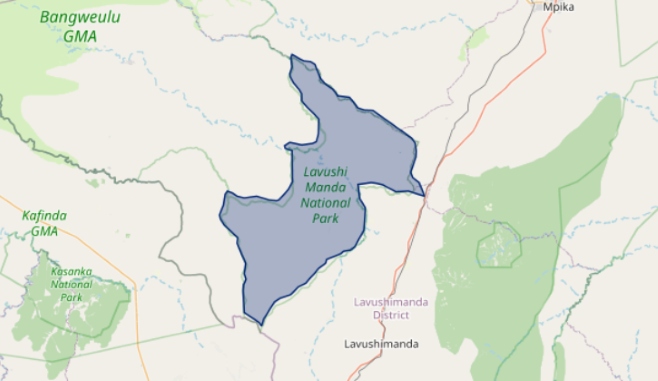
Lavushi Manda's dense forests offer a journey into the heart of nature
Future of Lavushi Manda: What’s next?
Eco-tourism plans
Plans are underway to create eco-lodges, interpretive trails and guided wildlife experiences. The goal is to protect the park while making it more accessible to responsible travelers.
FAQs for travelers
- Is Lavushi Manda National Park safe to visit?
Yes, it’s very safe. There’s minimal human-wildlife conflict and park rangers are helpful and knowledgeable.
- Can I visit Lavushi Manda without a guide?
Yes, but hiring a local guide is highly recommended for safety, navigation and learning about the ecosystem.
- Are there safari tours available?
This is not a typical safari park. It’s more about hiking, birdwatching and nature immersion. No mass tourism here.
- What are the fees to enter the park?
Fees vary by nationality and activity. It’s best to check with Zambia’s Department of National Parks and Wildlife for up-to-date pricing.
- Is Lavushi Manda good for families or kids?
It’s better suited for adventurous adults or older teens, especially those who enjoy hiking and rustic travel.
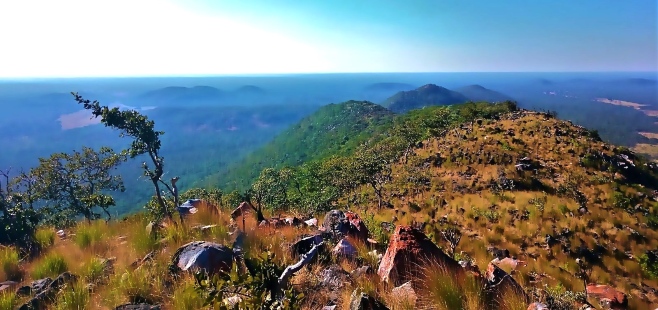
Explore the beautiful pathways of Lavushi Manda
Final thoughts
Lavushi Manda National Park is for the true explorer - the kind of traveler who values nature in its rawest form. If you’re looking to unplug, hike mountains and spot rare birds with no one else around, this park belongs on your bucket list.
Pack your curiosity and an adventurous spirit - Zambia's hidden wilderness is calling.
Related Articles
- Air Charter Zambia: Tourist guide to flights, safaris & transfers
- Ngonye Falls: Zambia’s natural beauty and cultural heritage
- Luambe National Park: Discover Zambia’s untouched wilderness
- Lavushi Manda National Park: Zambia’s hidden gem
- Sioma Ngwezi National Park: Wildlife and travel guide in Zambia
- Zambia eVisa (online visa) or visa on arrival: Key differences
- Barotse Floodplain: Importance of Zambia’s seasonal wetland
- Angel’s Pool Zambia: Experience Victoria Falls up close
- Nyege Nyege festival: East Africa’s music and arts celebration




